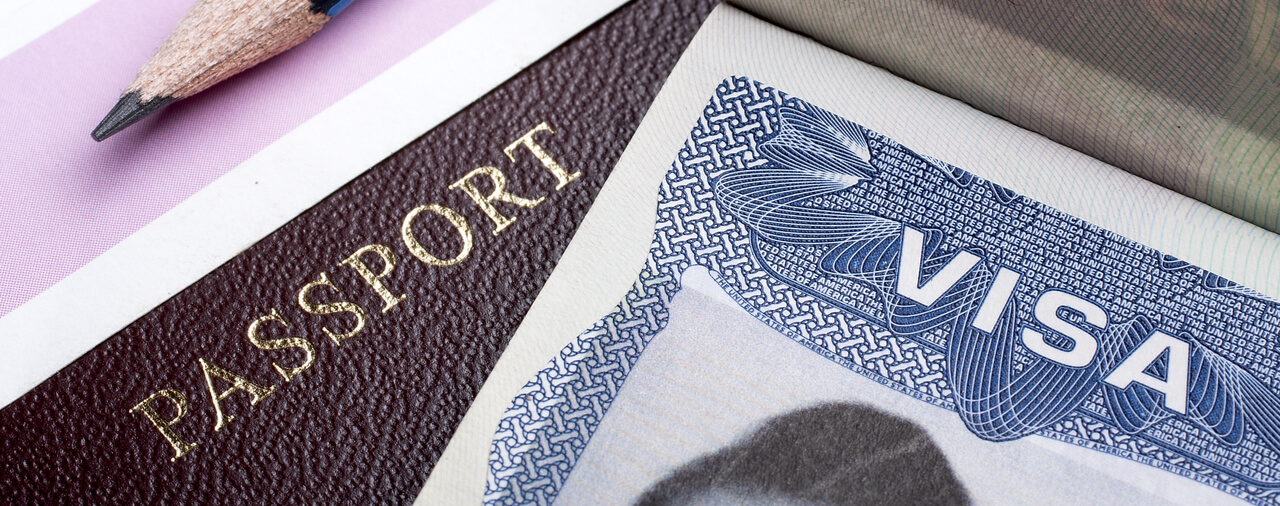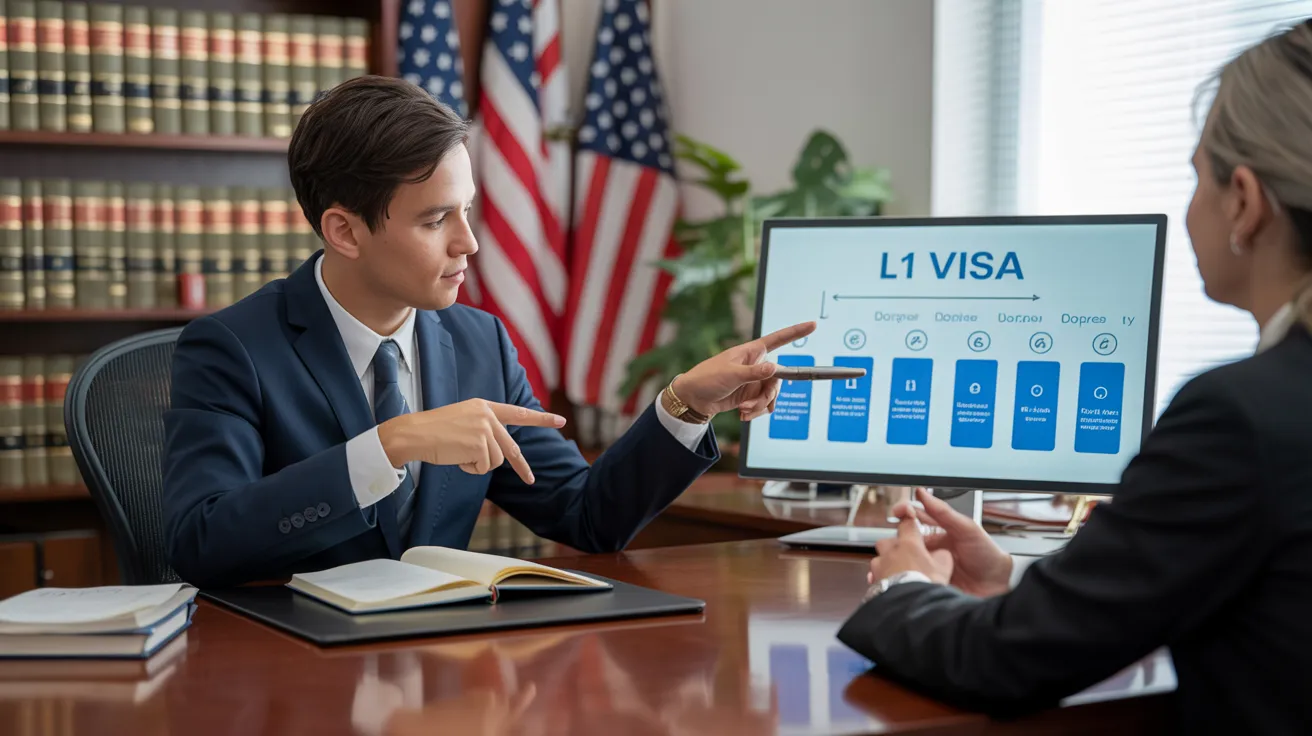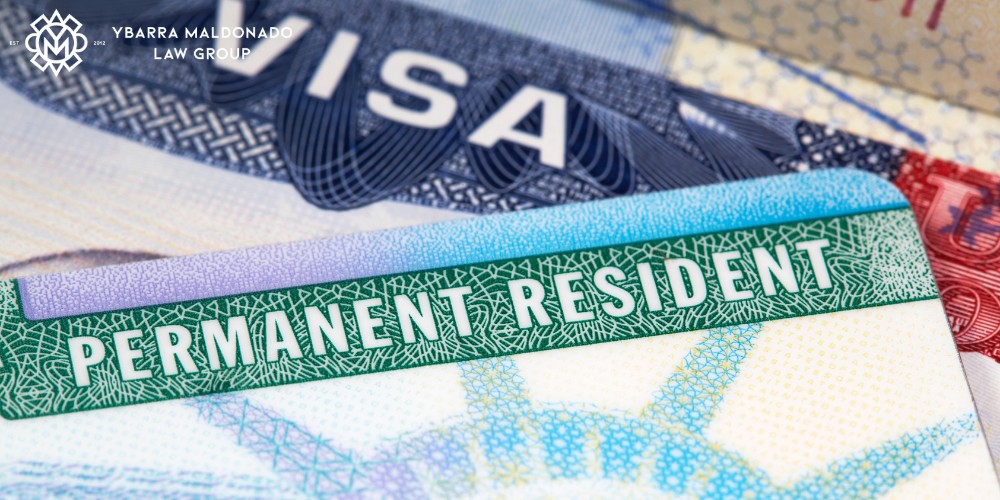Unlocking Opportunities: A Comprehensive Guide to the L1 Visa Process
The L1 visa process offers a crucial pathway for international companies looking for to transfer crucial employees across borders. Recognizing the subtleties of qualification standards, the differences in between L-1A and L-1B visas, and the ins and outs of the application process can substantially affect an applicant's success. However, maneuvering this complicated landscape is not without its difficulties, and careful focus to paperwork and company sponsorship is vital. As we explore the vital components of this procedure, the strategies for overcoming potential obstacles will come to be evident, revealing exactly how informed prep work can open a globe of chances.
Recognizing the L1 Visa
Comprehending the L1 visa requires recognizing its significance as an essential tool for multinational companies seeking to move skilled staff members between worldwide workplaces. This non-immigrant visa classification promotes the motion of executives, supervisors, and specialized understanding employees to the United States, thereby making it possible for companies to keep operational connection and harness worldwide talent efficiently. The L1 visa is split right into two primary categories: L-1A for managers and executives, and L-1B for staff members possessing specialized knowledge.The L1 visa offers a crucial role in enhancing a business's one-upmanship in the international market - L1 Visa Requirements. By allowing firms to relocate their crucial employees, companies can ensure that important jobs are managed by qualified people that are currently knowledgeable about the business's culture and operational procedures. This inner transfer system not only promotes understanding sharing yet also promotes advancement and partnership throughout borders.Moreover, the L1 visa is typically favored for its reasonably straightforward application procedure contrasted to various other visa classifications, as it permits double intent, permitting holders to go after long-term residency while on a temporary copyright. This function makes the L1 visa especially appealing for both employers and employees, as it enhances the path for proficient professionals to establish long-term residency in the United States
Eligibility Requirements
Qualification for the L1 visa hinges on numerous vital standards that assure both the employee and the company fulfill details qualifications. This non-immigrant visa is developed for international companies to move employees from international offices to U.S. counterparts.Firstly, the company has to be a certifying company, that includes a parent firm, branch, affiliate, or subsidiary of an U.S. service. The business should have been doing company for at the very least one year both in the U.S. and abroad. This guarantees that the business has adequate operational security and a genuine presence.Secondly, the employee has to hold a supervisory, executive, or specialized understanding position. For L1A visas, the candidate has to demonstrate managerial or executive qualifications, while L1B visas focus on specialized understanding associated to the company's products, solutions, or processes. Additionally, the worker needs to have helped the international entity for at the very least one continuous year within the last three years before their application.Lastly, the employee's function in the U.S. must align with their previous setting, making sure that their skills and experience are leveraged for the firm's benefit.
Types of L1 Visas
The L1 visa group makes up two key types created to help with the transfer of staff members within multinational companies: the L1A visa for supervisors and executives, and the L1B visa for employees with specialized understanding. Each kind serves unique purposes and has particular qualification criteria.The L1A visa is tailored for people that hold managerial or executive settings within a business. This visa enables high-level staff members to transfer to a united state branch, subsidiary, or affiliate of the same organization. Candidates for the L1A visa have to demonstrate that they have been employed in a supervisory or executive capacity for at least one continuous year within the previous 3 years prior to their application. In addition, this visa uses a much longer duration of keep, initially approved for three years, with the opportunity of extensions for up to seven years.In contrast, the L1B visa is meant for experts with specialized understanding associated to the firm's items, services, or procedures. To qualify, applicants must confirm that their competence is important to the company which they have actually helped a minimum of one continuous year within the last three years in a duty that required this specialized understanding. The L1B visa is at first approved for 3 years, with expansions readily available for approximately five years.Both visa kinds are essential for firms looking for to improve their global procedures by leveraging competent workers, thereby promoting innovation and efficiency within the U.S. market.
Application Process
Steering with the L1 copyright process entails numerous essential actions that need to be thoroughly followed to guarantee a successful outcome. The process begins with the united state company, who should first establish qualification by demonstrating a qualifying relationship with the international entity and validating that the staff member satisfies the certain requirements for the L1 visa classification being sought.Once eligibility is confirmed, the company starts the procedure by filing Form I-129, the Application for a Nonimmigrant Employee, with the United State Citizenship and Migration Services (USCIS) This kind should be accompanied by a comprehensive summary of the task tasks to be performed, the organizational structure of both the U.S. and foreign entities, and the staff member's credentials. It's important to verify that all info is exact and total, as omissions or errors can lead to delays or denials.Upon authorization of the I-129 application, the following step entails the staff member using for the L1 visa at a united state embassy or consular office in their home country. This stage calls for the completion of Form DS-160, the Online Nonimmigrant copyright, and scheduling a meeting. Throughout the interview, the applicant should offer evidence sustaining their credentials and the company's petition.After the visa is provided, the staff member can enter the United States to function in the designated function. Overall, careful prep work and adherence to each step of the application procedure are essential for a successful L1 visa outcome.
Needed Documents

Vital Kinds Needed
Maneuvering the L1 Visa procedure calls for careful focus to the crucial types and documents necessary for an effective application. The main kind needed is the Type I-129, Application for a Nonimmigrant Employee, which must be completed and sent by the united state employer. This kind outlines the information of the employment offer and the qualifications of the worker looking for the L1 Visa.Alongside Type I-129, the applicant will certainly require to total Kind I-539 if accompanying household participants are also obtaining visas. Furthermore, the employer has to provide evidence of the qualifying partnership between the U.S. entity and the international entity, commonly necessitating the entry of corporate documents such as short articles of unification or economic statements.Moreover, it is important to include the L Classification Supplement to Type I-129, which specifies the type of L Visa being requested-- either L-1A for managers and execs or L-1B for employees with specialized knowledge. Applicants need to assure that all types are signed and dated appropriately, as insufficient entries can lead to delays or denials. Correctly constructing these essential types lays the structure for a smoother L1 copyright process.

Sustaining Evidence Needs
Sustaining paperwork is vital for a successful L1 copyright, as it validates the cases made in the application. Candidates need to give a variety of records to show eligibility for the visa, which is classified right into two key types: proof of the qualifying relationship in between the united state and foreign entities and evidence of the candidate's qualifications.To establish the relationship, candidates must send documents such as corporate organizational charts, monetary statements, and evidence of possession. These files validate that the international business has a certifying connection with the united state employer, whether as a moms and dad firm, subsidiary, branch, or affiliate.For the applicant's qualifications, crucial records consist of a comprehensive work letter from the foreign company, detailing the applicant's work title, responsibilities, and period of employment. Furthermore, educational qualifications, such as degrees and diplomas, should be offered to show the candidate's know-how in the relevant area.
Employer Sponsorship Files

Common Challenges
Navigating the L1 visa procedure offers several common challenges that candidates ought to know. Secret concerns commonly consist of rigid documentation needs, possible delays in processing times, and the need for strict lawful conformity. Understanding these barriers can assist candidates much better prepare and alleviate risks throughout their copyright trip.
Documentation Demands
The L1 copyright procedure often provides substantial challenges related to paperwork requirements. Applicants should supply comprehensive paperwork to develop eligibility, which can result in confusion and possible delays. Trick documents include proof of a qualifying relationship between the U.S. and international employer, proof of the candidate's work history, and thorough information regarding the work duty in the U.S.One common challenge is collecting sufficient proof to show the nature of the qualifying partnership. Business typically battle to existing clear organizational graphes or monetary declarations that show the connection in between the entities. Furthermore, making sure that letters of support from employers accurately reflect L1 Visa requirements the candidate's task obligations and qualifications is necessary, as unclear summaries can result in denials.Another concern emerges from the demand for comprehensive task summaries that straighten with the L1 visa groups. Candidates need to express not just their existing duty yet likewise their supervisory or specialized understanding duties plainly. This necessitates a complete understanding of both the applicant's position and the governing language utilized in L1 applications.
Processing Time Delays
Experiencing hold-ups in processing times is an usual difficulty faced by L1 visa applicants, often causing irritation and unpredictability. Several variables add to these delays, including high application quantities, raised analysis of applications, and management backlogs within the united state Citizenship and Immigration Provider (USCIS) Applicants may find that handling times can differ substantially depending upon the solution facility handling their application, as each facility has its very own workload and performance degrees. Furthermore, the intricacy of the candidate's case, such as the requirement for extensive paperwork or clarification, can additionally expand wait times.In some instances, issues connected to the candidate's current migration status or previous visa background might additionally result in added delays, as USCIS might need further evaluation or information. It is vital for prospects to remain proactive during this period, preserving open interaction with their companies and lawful reps to deal with any kind of possible concerns promptly.Understanding these handling time obstacles can aid L1 visa candidates prepare for feasible hold-ups and reduce the effect on their change and occupation plans. Persistence and persistance are important virtues in navigating this complex process.
Legal Compliance Issues
Lots of L1 visa candidates encounter legal compliance concerns that can complicate their trip towards acquiring the visa. Recognizing and sticking to the specific regulations established by the united state Citizenship and Immigration Solutions (USCIS) is important. Typical difficulties include showing the qualifying connection in between the foreign and united state companies, in addition to confirming that the candidate has the requisite customized expertise or supervisory capacity.Additionally, candidates have to give comprehensive documentation outlining their task tasks, corporate framework, and economic practicality of the united state entity. Insufficient or incorrect documentation can lead to delays or perhaps rejections. Companies need to likewise ensure that they conform with labor laws, consisting of wage and working condition criteria, which can influence visa eligibility.Another common concern entails preserving conformity with the regards to the visa when provided. Modifications in employment condition, work duties, or firm structure can necessitate amendments to the visa, which otherwise resolved promptly can cause legal problems. Because of this, staying informed about conformity needs and seeking lawful counsel when needed is vital to browse the complexities of the L1 visa procedure efficiently.
Tips for Success
Success in the L1 copyright process often pivots on careful prep work and interest to information. To improve your opportunities of approval, start by thoroughly recognizing the qualification needs for both the L1A and L1B visa groups. Evaluate whether your position at the firm qualifies as supervisory, executive, or specialized expertise, as this classification especially affects your application.Next, gather considerable documents that substantiates your claims. This consists of business charts, detailed task summaries, and evidence of the company's operational framework. Clear and succinct evidence of the qualifying relationship between the united state entity and the foreign entity is crucial. Verify that all records are organized realistically and offered in a specialist fashion, as this mirrors your dedication and severity regarding the application.Engage the solutions of an experienced immigration lawyer who specializes in L1 visas. Their experience can verify important, directing you via complicated laws and guaranteeing that all documentation abides by present laws. Furthermore, plan for the meeting by exercising solution to typical inquiries and preparing to review your duty and payments to the business detailed.
Often Asked Concerns
Can Household Members Come With the L1 Visa Owner?
Yes, member of the family of L1 visa owners, including spouses and single kids under 21, can accompany the key visa holder. They might likewise make an application for L2 visas, which permit them to stay in the USA.
The Length Of Time Can I Remain On an L1 Visa?
The L1 visa allows first stays of approximately 3 years, with the possibility of expansion. L1A visa holders might stay for an optimum of seven years, while L1B visa holders can remain for five years.
Can L1 Visa Owners Get a Permit?
Yes, L1 visa owners can get a permit. L1 Visa. They may seek permanent residency through employment-based categories, typically calling for sponsorship from their employer, supplied they satisfy the essential certifications and paperwork needs
What Takes place if My L1 copyright Is Rejected?
If your L1 copyright is denied, you might obtain a notification describing the reasons for rejection. You can seek to appeal the choice, reapply, or check out different visa choices based on your conditions.
Are There Any Travel Limitations With an L1 Visa?
An L1 visa normally permits international traveling; nevertheless, re-entry to the U. L1 Visa.S. rests upon preserving legitimate standing. Travelers should ensure conformity with visa problems to stay clear of difficulties upon return
Final thought
